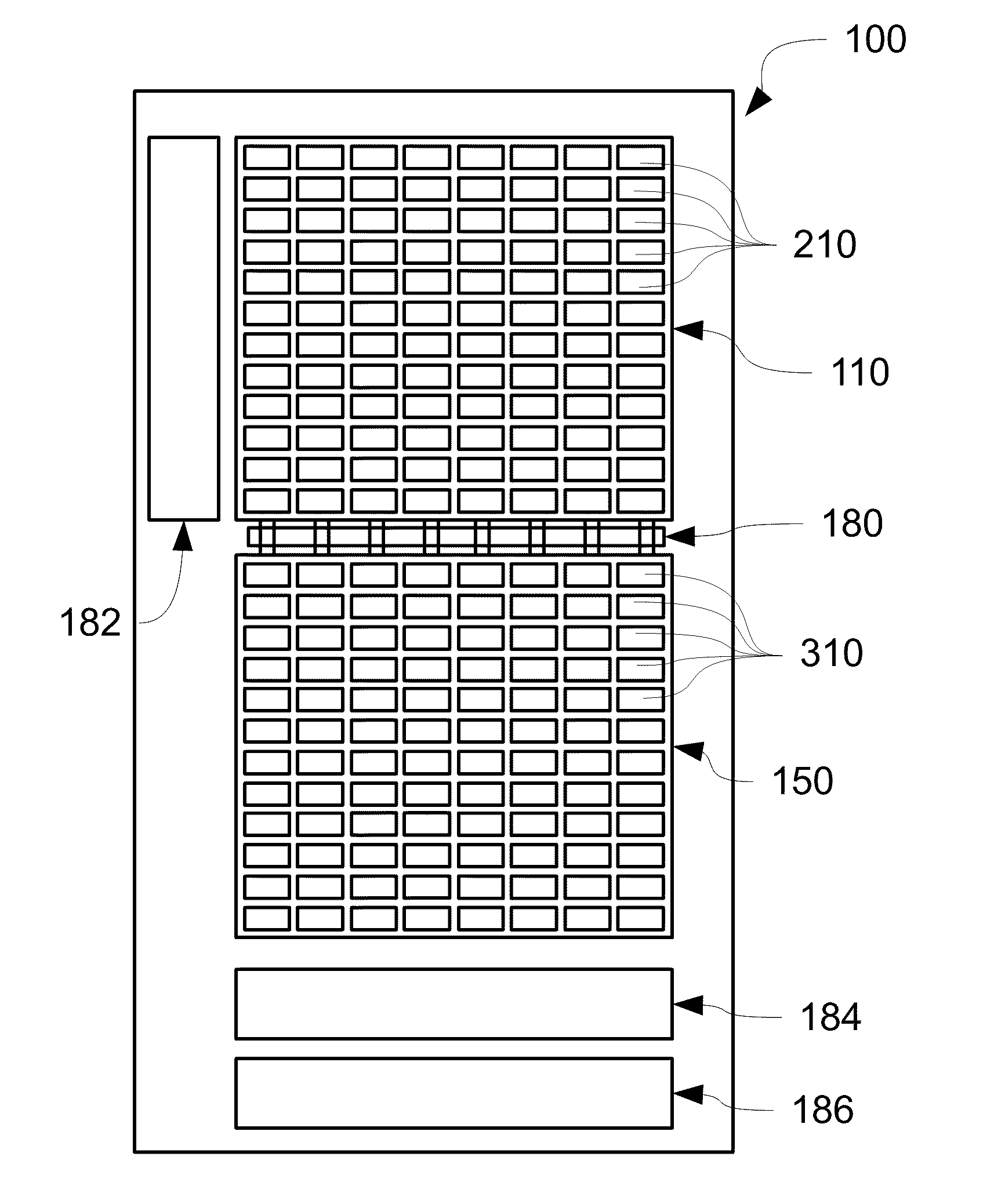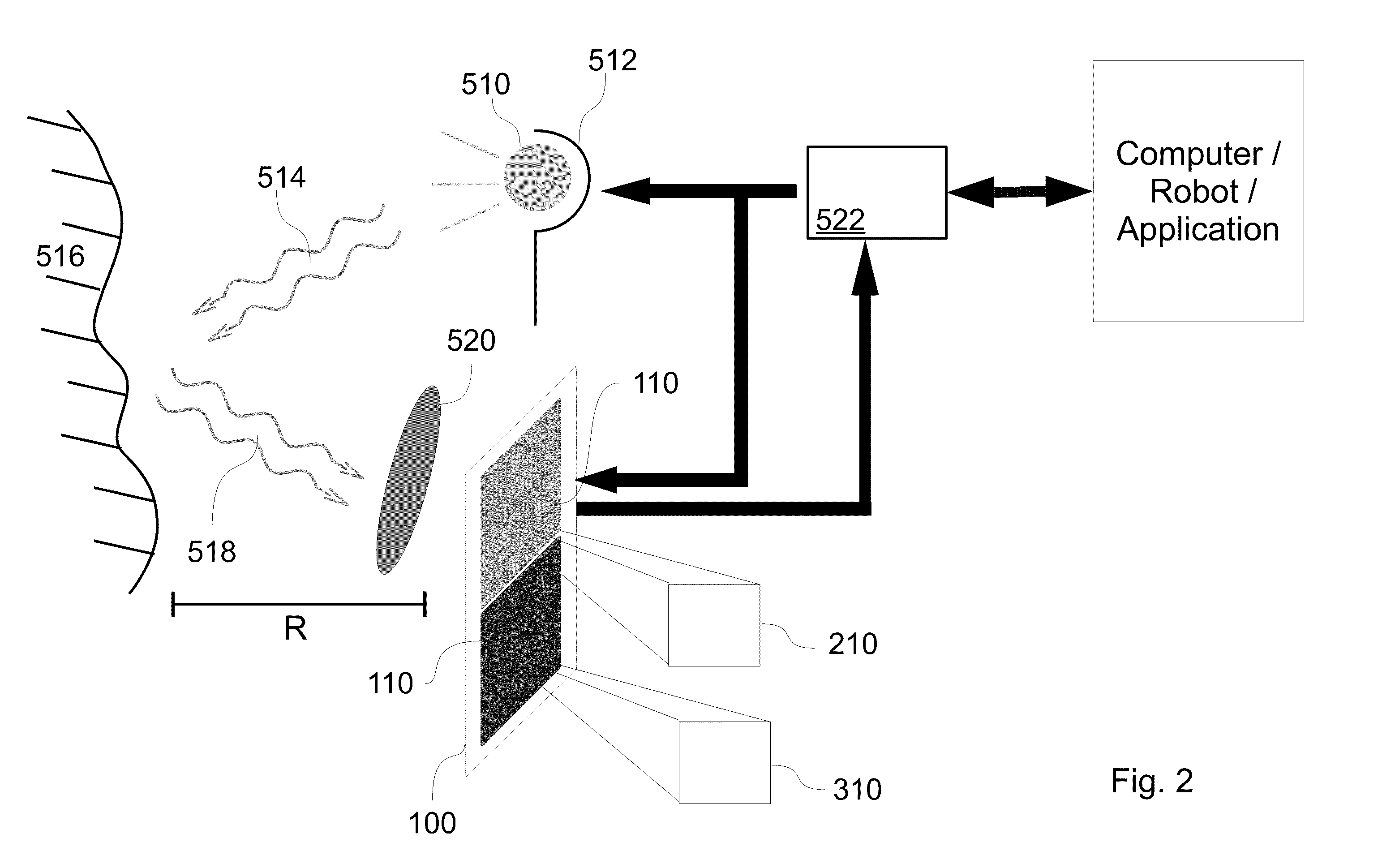Demodulation Sensor with Separate Pixel and Storage Arrays
a technology of demodulation sensor and storage array, which is applied in the field of demodulation sensor with separate pixel and storage array, can solve the problems of pixel pitch of 10 micrometers or less becoming almost impossible without compromise in distance resolution and accuracy, and pixel pitch of 10 micrometers or less becoming almost impossible without significant reduction of pixel fill factor, so as to reduce storage nodes even smaller, reduce pixel size, and reduce the effect of pixel siz
- Summary
- Abstract
- Description
- Claims
- Application Information
AI Technical Summary
Benefits of technology
Problems solved by technology
Method used
Image
Examples
Embodiment Construction
[0037]FIG. 1 shows a demodulation sensor 100 that has been constructed according to the principles of the present invention.
[0038]The illustrated architecture extracts elements, which are typically integrated inside the pixel but not necessarily required for the photo detection, out of the pixel into physically separated elements that are basically storage and sometimes processing elements, termed storage elements or proxels. As a consequence, the sensor includes a pixel array 110 of x×y pixels and a storage or proxel array 150 of x×y of storage elements or proxels 310 that are used for further processing, storage of the information and readout. Usually x and y are greater than 100, and preferably greater than 200. In some examples x, y are greater than 1000. The two arrays are physically separated from each other in preferably discrete arrays that do not physically overlap with each other on the chip.
[0039]Multiple functions are preferably handled in this proxel array 150. Thus, th...
PUM
 Login to View More
Login to View More Abstract
Description
Claims
Application Information
 Login to View More
Login to View More - R&D
- Intellectual Property
- Life Sciences
- Materials
- Tech Scout
- Unparalleled Data Quality
- Higher Quality Content
- 60% Fewer Hallucinations
Browse by: Latest US Patents, China's latest patents, Technical Efficacy Thesaurus, Application Domain, Technology Topic, Popular Technical Reports.
© 2025 PatSnap. All rights reserved.Legal|Privacy policy|Modern Slavery Act Transparency Statement|Sitemap|About US| Contact US: help@patsnap.com



